Retinal Angiogram: Insights into Ocular Imaging


Intro
Retinal angiography is an essential technique in ophthalmology, instrumental in visualizing the intricate blood vessels of the retina. This imaging modality employs a contrast dye to enhance vascular detail, providing insights into various ocular conditions. This article elaborates on the processes, methodologies, and potential advancements in retinal angiography, aimed at students, researchers, and healthcare professionals.
Recent Advances
Latest Discoveries
Over the past few years, research has contributed significantly to enhancing retinal angiography. One notable discovery includes the improved identification of rare retinal vascular diseases. Studies have shown that comprehensive angiography can detect conditions like retinal vasculitis and retinopathy of prematurity with greater accuracy.
New imaging techniques are being investigated, such as wide-field imaging, which allows visualization of a greater retinal area and enables better disease management. This advancement aids practitioners in making more informed treatment decisions rapidly.
Technological Innovations
Recent technological advancements have elevated retina imaging. Innovations such as Optical Coherence Tomography Angiography (OCTA) provide a non-invasive alternative, reducing patient discomfort associated with traditional angiography. OCTA allows for high-resolution imaging of retinal and choroidal blood flow, presenting clear images without the need for contrast dye injection.
Moreover, artificial intelligence is increasingly being integrated into image analysis. Algorithms can quickly analyze angiographic images, assisting clinical teams to identify abnormalities more efficiently and accurately. This integration can streamline workflows and enhance diagnostic accuracy in retinal diseases.
Methodology
Research Design
The methodology for studying retinal angiography is multifaceted. Most research designs focus on observational studies where patient histories are assessed alongside angiographic imaging results to evaluate treatment efficacy. Randomized clinical trials are also conducted to ascertain the effectiveness of new imaging technologies and protocols.
Data Collection Techniques
Data collection techniques in retinal angiography include standardized imaging protocols using fluorescein or indocyanine green dye. These protocols ensure consistency and reliability in data collection across various studies.
An important aspect also involves patient interviews and assessments. Gathering data on visual symptoms, medical histories, and responses to treatments adds valuable context to the angiographic findings. The combination of imaging and detailed patient assessment is critical for comprehensive understanding and management of ocular diseases.
"Retinal angiography serves as a cornerstone for diagnosing and monitoring various eye conditions, highlighting the importance of continual advancements in the field."
The integration of modern techniques and analytical tools will undoubtedly shape future research directions, ultimately enhancing patient care in ophthalmology.
Overview of Retinal Angiography
Retinal angiography is an essential diagnostic tool in ophthalmology. It allows healthcare professionals to visualize the blood vessels within the retina, aiding in the detection and management of various ocular diseases. Understanding this technique is crucial due to its wide-ranging implications on eye health. By tracing blood circulation in the retina, this imaging method facilitates the early detection of conditions that might lead to vision loss.
Definition of Retinal Angiogram
A retinal angiogram is a specialized imaging technique that captures images of the retinal blood vessels. This procedure involves injecting a contrast dye, typically fluorescein or indocyanine green, into the patient's bloodstream. The dye illuminates the blood vessels, allowing for clear imaging under a specialized camera. This process enables clinicians to observe the flow of blood and identify abnormalities such as leakages, blockages, or growth of new, abnormal vessels. The information gathered through a retinal angiogram is invaluable for creating an accurate diagnosis and formulating a treatment plan.
Historical Development
The history of retinal angiography reflects significant technological advancements. The technique began to take shape in the mid-20th century, with the introduction of fluorescein dye to visualize fundus structures. Early systems utilized basic cameras and film technology. As the understanding of retinal diseases expanded, so did the sophistication of retinal imaging systems. In the 1990s, indocyanine green angiography emerged, providing deeper imaging capabilities for specific conditions. Today, advancements continue with high-resolution imaging systems and the integration of digital technology, enhancing the accuracy and efficiency of retinal angiography.
"Retinal angiography has transformed from simple imaging techniques to complex systems that leverage cutting-edge technology for improved patient outcomes."
This evolution highlights the ongoing efforts to improve the visualization of retinal structures, which is crucial for accurate diagnostics and treatment. Understanding these developments not only provides insight into how far the field has come but also sets the stage for future innovations.
Technical Aspects of Retinal Angiography
Understanding the technical aspects of retinal angiography is crucial for comprehending its overall impact on ocular health. The methodologies and instruments involved determine the quality of the images captured and the diagnostic information derived from them. By familiarizing oneself with the various imaging modalities, instrumentation, and procedural steps, healthcare professionals can enhance their diagnostic acumen and patient outcomes. This section elucidates these elements, underpinning their significance in clinical applications and improving the quality of retinal assessments.
Imaging Modalities
Fluorescein Angiography
Fluorescein angiography (FA) is a well-established imaging technique in retinal angiography. It primarily utilizes fluorescein dye to visualize the blood vessels of the retina. This method is particularly valuable because it highlights abnormalities in blood flow, enabling clinicians to diagnose various retinal conditions effectively.
Key characteristics of fluorescein angiography include:
- High sensitivity for detecting retinal diseases like diabetic retinopathy and macular edema.
- Rapid image acquisition, allowing for real-time assessment of retinal perfusion.
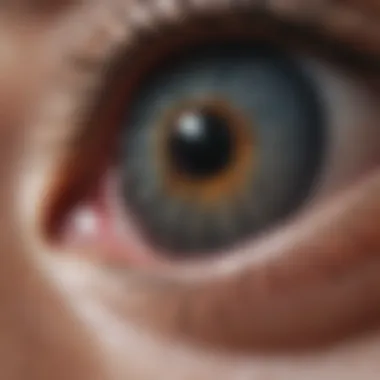
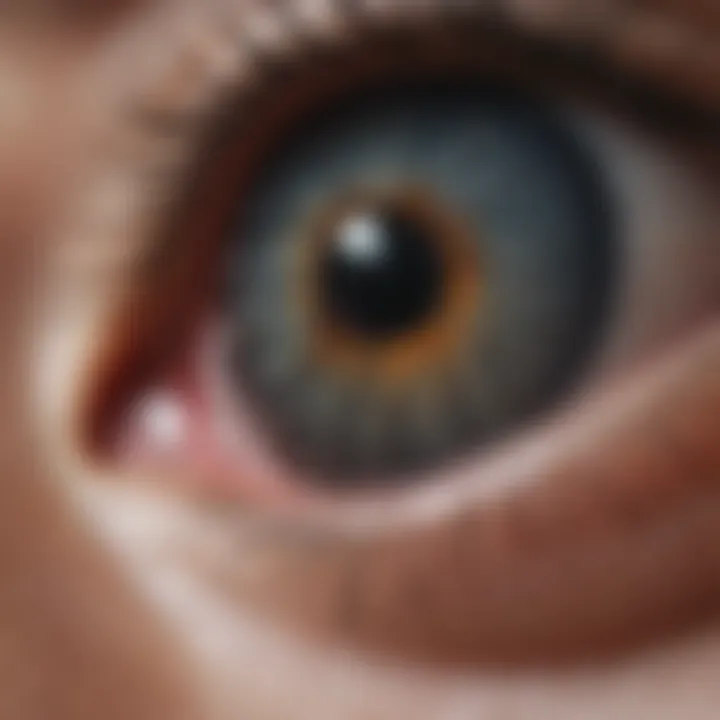
The unique feature of fluorescein angiography lies in its ability to visualize the dynamic process of dye circulation within the retinal vessels, thus revealing leakage or blockage. However, it is essential to note that some patients may experience adverse reactions to the contrast medium, which needs consideration when deciding on imaging options.
Indocyanine Green Angiography
Indocyanine green angiography (IA) serves as a complementary tool to fluorescein angiography. It employs indocyanine green dye, which has different properties compared to fluorescein. IA is particularly effective in visualizing choroidal circulation and identifying conditions such as choroidal neovascularization.
Key characteristics of indocyanine green angiography include:
- Enhanced visualization of deeper structures due to its infrared light absorption.
- Lower chance of allergic reactions compared to fluorescein, making it a safer alternative for some patients.
The unique aspect of IA is its capability to penetrate deeper layers of the retina, offering insights into choroidal blood flow. This modality, while beneficial, may not provide detailed information about the superficial retinal circulation, which can limit its diagnostic applicability in certain conditions.
Instrumentation Used
Cameras and Detectors
The cameras and detectors employed in retinal angiography are vital for capturing high-quality images and ensuring the accuracy of diagnoses. Modern angiographic cameras utilize advanced digital sensors that significantly enhance image clarity.
Key characteristics of these devices include:
- High-resolution imaging capabilities, facilitating detailed vascular visualization.
- Integration with various imaging techniques, allowing for comprehensive assessments.
A notable feature of these cameras is their adaptability to different angiographic protocols, which can be crucial for different patient needs. However, the cost of high-end angiography cameras may limit access for some healthcare facilities.
Software Applications
The software applications used in the processing of retinal angiograms play a critical role in analyzing and interpreting the collected images. These applications automate numerous tasks, from image enhancement to the quantification of vascular parameters.
Key characteristics of software applications include:
- Capability for automated analysis, reducing the time required for image interpretation.
- Tools for comparative analysis over time, enabling monitoring of disease progression.
One unique feature of these software systems is their ability to incorporate artificial intelligence, enhancing diagnostic accuracy. Despite their benefits, reliance on software may introduce challenges regarding data accuracy and variability, thus necessitating careful interpretation by trained professionals.
Procedure of Retinal Angiography
Preparation Steps
Preparation is crucial for the successful completion of retinal angiography. Clinicians must ensure that patients are adequately informed about the procedure, risks, and benefits involved.
Key characteristics of preparation steps include:
- Pre-procedural assessment to ensure patient eligibility and to address any concerns regarding contrast media.
- Recommendations against the use of specific medications that may interfere with image acquisition.
The unique aspect of thorough preparation is that it can significantly reduce anxiety and increase patient cooperation. Neglect in this phase can lead to complications during the imaging process, detracting from the overall efficacy of the procedure.
Contrast Agent Injection
The injection of contrast agents is a pivotal aspect of retinal angiography, as these agents enable the visualization of retinal blood vessels. Fluorescein and indocyanine green are the primary agents used, each selected based on the specific clinical scenario.
Key characteristics of contrast agent injection include:
- Rapid administration allows for timely imaging and reduces the risk of complications.
- Strict adherence to safety protocols to minimize adverse reactions.
One unique feature of contrast agent injection is the need for immediate monitoring post-administration to identify any severe reactions. Although effective, the use of contrast media is not without risks, underscoring the importance of patient evaluation prior to the procedure.
Image Acquisition
The image acquisition phase is where the actual data collection occurs. It involves the systematic capturing of angiographic images after the contrast agent has been injected.
Key characteristics of image acquisition include:
- Timing is critical; images must be taken at specific intervals to capture the dynamic flow of the dye.
- Use of various filters and settings to optimize image quality based on the chosen modality.
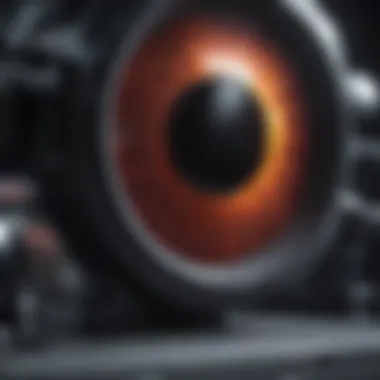
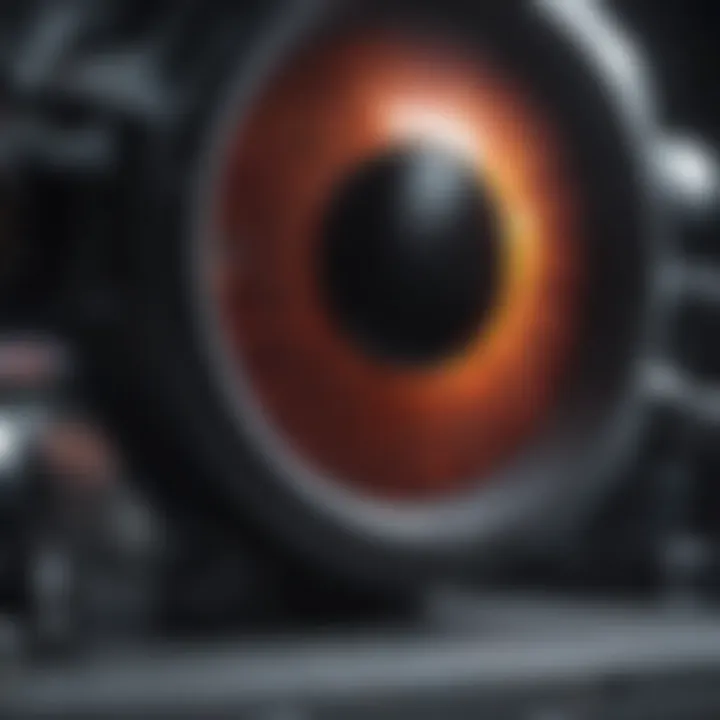
A unique feature of this phase is the use of standardized protocols to ensure consistency across different imaging sessions. While successful image acquisition leads to valuable diagnostic information, any technical failures can severely compromise the results.
Clinical Applications
Retinal angiography plays a crucial role in the clinical assessment of various ocular conditions. This imaging technique is essential for understanding how blood vessels in the retina behave under different pathological states. Its applications stretch across diagnosing retinal diseases, planning surgical interventions, and evaluating the effectiveness of ongoing treatments. Each aspect of its clinical application warrants a focused examination to appreciate its overall contributions to ocular health.
Diagnosis of Retinal Diseases
Diabetic Retinopathy
Diabetic retinopathy is a leading cause of vision loss among individuals with diabetes. The condition arises due to underlying changes in the retinal blood vessels that can lead to serious complications. Retinal angiography is especially valuable in this context. It allows for the visualization of abnormal blood vessel growth and leakage, key signs of the disease.
What sets diabetic retinopathy apart is its unique characteristic: the presence of microaneurysms and retinal hemorrhages that can be visualized effectively through angiography. This provides clinicians with important diagnostic information. The choice of including this condition in discussions about retinal angiography stems from its prevalence and the critical nature of early diagnosis. The advantages of using retinal angiography here include its ability to identify disease progression and guide treatment decisions. However, one must also consider the risks associated with contrast media, especially in patients with compromised renal function.
Retinal Vein Occlusion
Retinal vein occlusion is another significant condition that can be diagnosed using retinal angiography. This condition occurs when one of the veins carrying blood away from the retina becomes blocked. Angiography can reveal signs of blood circulation impairment and areas of ischemia.
The key characteristic of retinal vein occlusion is its acute onset, which can lead to rapid vision loss. Detecting the affected areas is vital in making timely interventions. This condition is a popular subject in angiographic studies due to its complexity and the varying presentations it can display. Utilizing retinal angiography can clarify these presentations, giving detailed insights into the severity and extent of the occlusion. The unique advantage it provides is the ability to plan treatments based on the specific areas that require intervention, whether it be laser treatment or other surgical options. However, it is critical to weigh the benefits against the potential complications from the contrast medium used.
Age-Related Macular Degeneration
Age-related macular degeneration (AMD) is a common degenerative condition of the retina, particularly among older adults. Early detection is paramount in managing this disease effectively. Retinal angiography helps uncover the neovascularization associated with the wet form of AMD, which can lead to significant sight loss.
The primary characteristic defining AMD in the context of angiography is the abnormal growth of blood vessels under the retina, which can often leak fluid or blood, affecting vision. This aspect makes retinal angiography a beneficial tool for diagnosing and assessing the progression of AMD. The detailed imaging aids healthcare providers in differentiating between wet and dry forms of AMD, thus influencing treatment approaches.
The unique advantage of using angiography in this context lies in its ability to monitor the response to therapies over time. On the downside, patients may experience risks associated with the use of the contrast agent, making it imperative to assess individual patient conditions before proceeding with angiography.
Surgical Planning
In addition to diagnosis, retinal angiography also holds significant importance in surgical planning. By providing a clear view of the vascular architecture in the retina, ophthalmologists can tailor their surgical approaches for maximal efficacy. It allows for a better understanding of the anatomical landmarks and variations in blood supply, which is vital for any surgical intervention.
Monitoring Treatment Effectiveness
Finally, retinal angiography is an essential tool for monitoring the effectiveness of treatments. Whether it is after surgical intervention or medical therapy, angiography can show changes in the retinal vasculature that indicate treatment success or the need for adjustment. It serves as a tool for recurring assessments, allowing healthcare providers to make informed decisions based on tangible data from the imaging studies.
Interpreting Results
Interpreting results from a retinal angiogram is crucial because it provides insights into the health of retinal blood vessels. This analysis helps in diagnosing various ocular conditions, planning treatments, and monitoring disease progression. Understanding angiographic findings can significantly influence patient outcomes, making it a core aspect of retinal angiography.
Analyzing Angiographic Patterns
Perfusion Status
Perfusion status is an essential component of retinal angiography results. This status indicates how well blood is flowing through the retinal vessels. A key characteristic of perfusion status is its ability to highlight areas of both adequate and inadequate blood supply. This aspect is beneficial for the diagnosis of conditions like diabetic retinopathy, where perfusion may be compromised.
One unique feature of perfusion status is its quantitative nature. By analyzing perfusion, professionals can gauge the extent of ischemia. This quantitative analysis allows for a wider understanding of disease severity, helping clinicians make better decisions regarding treatment plans. However, errors in interpreting perfusion status may arise from technical factors or patient-specific variables, suggesting a need for caution during assessment.
Leakage Patterns
Leakage patterns refer to the abnormal outflow of fluorescein dye from the retinal blood vessels into surrounding tissues. This characteristic is crucial for diagnosing conditions such as retinal vein occlusion or macular edema. It helps identify areas where the blood-retinal barrier has been compromised. The identification of leakage makes it a popular choice for those studying retinal diseases, as it provides direct evidence of pathological changes.
A unique feature of analyzing leakage patterns is their visually striking nature on angiograms. Clinicians can easily spot these leaks, which adds to their diagnostic power. However, the potential for misinterpretation exists if multiple factors are at play, such as coexisting retinal diseases or image artifacts, which can obscure true leakage.
Criteria for Diagnosis
Criteria for diagnosis through retinal angiography are grounded in both visual and quantitative evaluations. Professionals often utilize established benchmarks from the imaging results to differentiate between various conditions. Additionally, criteria may include the presence or absence of specific features like vascular leakage, abnormal perfusion, and more.
Overall, effective interpretation of results is essential in retinal angiography. Through understanding angiographic patterns and adhering to diagnostic criteria, healthcare providers can significantly improve outcomes for patients with retinal diseases.
Potential Complications
Understanding the potential complications associated with retinal angiography is essential. Such knowledge helps both practitioners and patients to manage risks. Despite being a valuable diagnostic tool, complications can still arise.
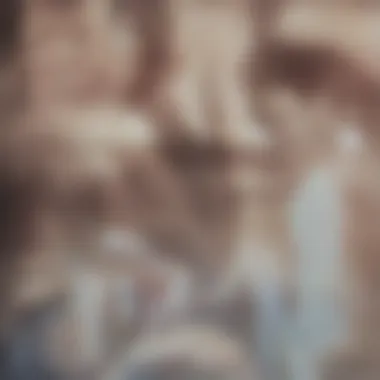

Adverse Reactions to Contrast Media
Adverse reactions are among the most common complications encountered during retinal angiography. The main contrast agents used are fluorescein and indocyanine green. Fluorescein may cause nausea and vomiting in some patients. Allergic reactions, although rare, can range from mild rashes to severe anaphylaxis. It is imperative to evaluate a patient’s history of contrast media allergies before conducting the procedure. Some people might require premedication to mitigate potential reactions.
Key considerations:
- Pre-procedure assessments: Always perform thorough evaluations.
- Monitoring: Close observation during the injection is important.
- Emergency protocols: Be prepared with protocols for managing severe reactions.
Infusing indocyanine green can also cause complications, though these are less common. Potential issues could include skin discoloration and transient visual disturbances. Hence, understanding these effects is critical for patient safety and confidence during the procedure.
Technical Failures
Technical failures can occur in any imaging procedure, and retinal angiography is no exception. Failures can arise from equipment malfunction, user error, or issues with contrast media. For instance, improper calibration of cameras can lead to poor image quality. If image clarity is inadequate, the diagnosis of retinal conditions suffers.
Causes of technical failures may include:
- Inadequate preparation: Failure to appropriately prepare the reproducibility of images can result in inaccurate data.
- Calibration errors: Ensure that calibration of cameras and detectors is performed regularly.
- Human factors: User proficiency plays a significant role in the success of the procedure.
Proper training for health professionals is essential to minimize the risks of technical failures. Continuous education and experience ensure that operators can troubleshoot potential issues quickly.
Additionally, having backup systems or alternative imaging modalities can be beneficial. This ensures that patient care does not falter in the event of a failure.
"The understanding of potential complications elevates the standard of care provided to patients undergoing retinal angiography."
In summary, the importance of recognizing both adverse reactions to contrast media and potential technical failures cannot be overstated. Proper awareness and preparation lead to better outcomes, enhancing the overall efficacy of retinal angiography in clinical settings.
Future Trends in Retinal Angiography
The field of retinal angiography continues to evolve, reflecting advances in technology and changes in clinical practices. This section discusses these future trends, highlighting key advancements that promise to enhance diagnostic capabilities, improve patient outcomes, and expand the scope of applications in eye care.
Advancements in Imaging Technology
Recent innovations in imaging technology are paving the way for more detailed and accurate retinal assessments. New imaging devices, such as wide-field imaging systems, allow for a broader view of the retinal landscape. This is crucial for detecting pathologies that may not be visible with traditional imaging methods.
In addition, improvements in optical coherence tomography (OCT) are allowing for better visualization of retinal structures. Enhanced OCT techniques can differentiate between layers of the retina with unprecedented precision. Ultimately, these advancements yield more comprehensive data for clinicians, aiding in early diagnosis and effective management of conditions such as diabetic retinopathy and macular degeneration.
"Early detection through advanced imaging is vital for preserving vision and improving quality of life for patients."
Integration with Artificial Intelligence
Artificial intelligence (AI) is becoming increasingly integrated into retinal angiography practices. AI algorithms can analyze imaging data more quickly than human experts. They can identify subtle patterns and anomalies which may escape the naked eye. This not only speeds up the diagnostic process but also enhances accuracy.
Machine learning models are being developed to predict disease progression through previous angiographic assessments. This predictive capability can significantly influence treatment strategies and improve patient outcomes. Furthermore, AI tools can help streamline workflow in clinical settings, allowing for greater efficiency.
Expanding Application Areas
The applications of retinal angiography are expanding beyond traditional uses. With ongoing research, there is a growing interest in utilizing this imaging technique for systemic disease detection. For example, studies are exploring how retinal blood vessel health may correlate with cardiovascular diseases.
Moreover, there is potential for applying retinal angiography techniques in pediatric and geriatric populations, where visual impairments can have profound effects on development and quality of life. Broader applications may also arise in telemedicine, allowing remote evaluations of retinal conditions. This ensures that individuals in underserved regions have access to vital diagnostic services.
In summary, the future of retinal angiography looks promising. With advancements in technology, integration of AI, and expanding applications, the field appears poised to provide more effective diagnostic and therapeutic strategies.
Ending
The conclusion of this article encapsulates the critical insights and implications of retinal angiography in modern ophthalmology. The discussion throughout the article emphasizes the importance of this imaging technique in diagnosing and managing various retinal conditions. Through retinal angiography, clinicians can visualize blood flow and identify abnormalities in the retinal vasculature, enabling timely interventions. This not only aids in effective treatment but also enhances the overall understanding of ocular diseases.
Summary of Key Insights
In summary, retinal angiography serves as a cornerstone for identifying crucial ocular conditions. Key insights derived from the article include:
- Enhanced Diagnostic Capabilities: Retinal angiography facilitates the detection of pathologies such as diabetic retinopathy and age-related macular degeneration, which are becoming increasingly prevalent.
- Methodological Evolution: The advancement of imaging techniques, such as fluorescein and indocyanine green angiography, has significantly improved the clarity and detail of retinal images.
- Role in Patient Management: Regular monitoring using retinal angiograms allows for assessing treatment effectiveness and adjusting strategies accordingly.
- Technological Integration: The potential incorporation of artificial intelligence and machine learning can refine interpretation and diagnose efficiency, possibly reshaping the future of retinal care.
Future Directions
Looking ahead, several directions stand out for the future of retinal angiography:
- Further Advancements in Imaging Technology: Ongoing innovation is expected to provide even higher resolution images and faster acquisition times, enhancing patient experience and diagnostic accuracy.
- Broader Application: Research is likely to explore the applications of retinal angiography beyond traditional retinal diseases, potentially identifying systemic diseases through ocular manifestations.
- Personalized Medicine: As genomic insights continue to expand, retinal angiography may be pivotal in personalized treatment approaches for retinal diseases based on individual patient profiles.
The reflections on the conclusions underscore not just the role of retinal angiography in contemporary practice but also its future potential as a pivotal tool in better eye health management.















